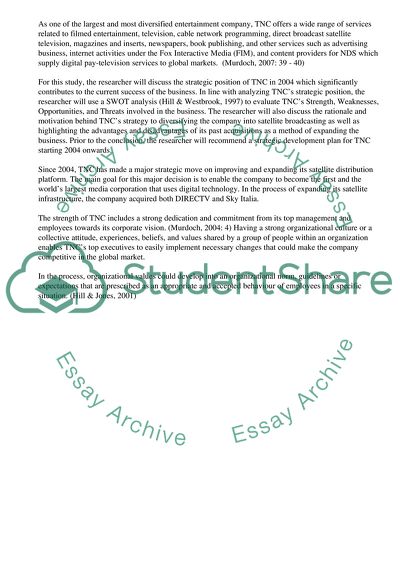Cite this document
(The News Corporation (TNC) Strategy Case Study Example | Topics and Well Written Essays - 2951 words, n.d.)
The News Corporation (TNC) Strategy Case Study Example | Topics and Well Written Essays - 2951 words. Retrieved from https://studentshare.org/business/1711949-tnc-startegy-essay
The News Corporation (TNC) Strategy Case Study Example | Topics and Well Written Essays - 2951 words. Retrieved from https://studentshare.org/business/1711949-tnc-startegy-essay
(The News Corporation (TNC) Strategy Case Study Example | Topics and Well Written Essays - 2951 Words)
The News Corporation (TNC) Strategy Case Study Example | Topics and Well Written Essays - 2951 Words. https://studentshare.org/business/1711949-tnc-startegy-essay.
The News Corporation (TNC) Strategy Case Study Example | Topics and Well Written Essays - 2951 Words. https://studentshare.org/business/1711949-tnc-startegy-essay.
“The News Corporation (TNC) Strategy Case Study Example | Topics and Well Written Essays - 2951 Words”, n.d. https://studentshare.org/business/1711949-tnc-startegy-essay.


